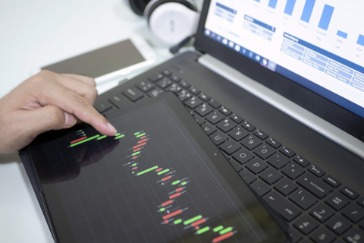What is Leverage in Forex? Forex Leverage Explained
Content

That is, a trader must adhere to their strategy, as well as pay attention to signals and indicators and the results of technical and fundamental analysis. It is also important to navigate economic events that impact the value of shares and fluctuations in the price of currency pairs. But the truth is, it isn’t usually economics or global finance that trip up first-time forex traders. Instead, a basic lack of knowledge on how to use leverage is often at the root of trading losses.
It is one of the most popular patterns because of its simplicity, reliability, and transparent execution rules. Even if they are successful, this might encourage them to indulge in leverage even more. Eventually, a single mistake can completely destroy their account, or in some cases, the entire investment business. For example, Archegos Capital Management collapsed in March 2021, erasing $20 billion in value due to excessive use of leverage.
Leverage can be used to increase the potential profit from a trade. Forex leverage is when a broker provides you with more capital to trade with than what you deposited. This increases your “buying power” and allows you to make trades using this larger amount of capital. Thus, a stop-loss of 30 pips could represent a potential loss of $30 for a single mini lot, $300 for 10 mini lots, and $3,000 for 100 mini lots.

Although the ability to earn significant profits by using leverage is substantial, leverage can also work against investors. For example, if the currency underlying one of your trades moves in the opposite direction of what you believed would happen, leverage will greatly amplify the potential losses. To avoid a catastrophe, forex traders usually implement a strict trading style that includes the use of stop-loss orders to control potential losses. A stop-loss is a trade order with the broker to exit a position at a certain price level. Investors use leverage to enhance the profit from forex trading.
How does Forex Work?
Margin is the amount of money needed as a “good faith deposit” to open a position with your broker. The textbook definition of “leverage” is having the ability to control https://g-markets.net/helpful-articles/how-to-use-trading-chart-continuation-patterns/ a large amount of money using none or very little of your own money and borrowing the rest. Generally, a trader should not use all of their available margins.
You can use leverage to increase the size of your position, and so, increase the returns. Or, you can use leverage to reduce margin (the collateral demanded by the broker for the position opened). High competition in the brokerage market is pushing brokers to provide high leverage. On the other hand, if there was no leverage, Forex would not be an affordable market with an entry threshold of several hundred dollars. As we have seen, the best leverage ratio on Forex is a relative term. Using too high a leverage can either bring incredible profits or ruin the trader.
Head and Shoulders Pattern in Forex Trading
Keep in mind that leverage is totally flexible and customizable to each trader’s needs. The concept of using other people’s money to enter a transaction can also be applied to the forex markets. In this article, we’ll explore the benefits of using borrowed capital for trading and examine why employing leverage in your forex trading strategy can be a double-edged sword.

Let’s discuss leverage and margin and the difference between the two. Gordon Scott has been an active investor and technical analyst or 20+ years.
Defining Leverage
Leverage in Forex is the ratio of the trader’s funds to the size of the broker’s credit. In other words, leverage is a borrowed capital to increase the potential returns. The Forex leverage size usually exceeds the invested capital for several times.
- You can also alter the leverage entering the Metatrader menu on the right.
- Forex brokers often target clients with small amounts of capital.
- With the right strategy and mindset, leverage can be a powerful tool in the hands of a skilled trader.
- Leverage is how large of a position(s) you can take in relation to your capital.
- Avoid the currencies of developing countries or countries experiencing political or economic turmoil until you become very confident in your trading.
- Leverage shows the ratio of borrowed funds to the trader’s own deposits.
Read on and you will learn what is leverage and how it works. You will also learn how to calculate and find out the most optimal leverage. I will cover all the pros and cons of leverage trading and give real examples of leverage forex trading. Now we will calculate the maximum size of positions that we can open and the risk per trade, subject to the above rules. It is important to always remember that using low, medium or maximum leverage on Forex is a commitment. You return the main value of the leverage in the form of swap regardless of whether you succeed or fail at the end of the trading day.
You may see leverage listed or advertised another way, as margin. Leverage is how large of a position(s) you can take in relation to your capital. For a $1000 loss, the capital falls to $9,000 – requiring an 11.11% win.
What is the Best Leverage in Forex
From the examples above we concluded that high leverage is okay. If you follow the rules of risk management and have proper trading discipline, high leverage is more of an advantage. Liquidation risks do go down with higher leverage, provided that trading volumes remain the same. From this example, it is obvious that for trading with a lower leverage, you need to increase your deposit so that you can actively trade with the required level of diversification. Swap is a commission for using leverage that is automatically withdrawn from the trader’s balance.
When you trade Forex currency pairs, you exchange one currency for another or convert one currency into another. This dynamic market differs from stock trading because it operates virtually around the clock for most of the working week due to the difference in time zones. This makes efficient Forex trading more accessible to those who work during standard exchange hours. Furthermore, the best Forex robots are here for you to help you achieve success in trading, so it’s easier than it may seem. It is crucial to understand the risks in advance and not to perceive credit funds as the best good. Experienced traders call it a double-edged sword, and they did not coin such a term by chance.
As the trader’s base currency is the US dollar, the amount of money indicated in the Assets Used section will be expressed in the USD. A cross-rate is a currency exchange rate that doesn’t include the USD. But the collateral here is also calculated in the currency that is in the first place in the ratio.
Obviously, the cost of leverage directly depends on the volume of its use. The broker usually charges the commission only for the actual amount of funds used. Whether you are a newbie trader on the Forex market or have solid experience, you have certainly already encountered the concept of leverage. If you are just discovering Forex trading, you may be wondering what exactly this term means. In this case, I recommend you to read the article “What is leverage”. Forex trading is the process of buying and selling currencies at agreed prices.
Using stop-losses is a popular way to reduce the risk of leverage. Attaching a stop-loss to your position can restrict your losses if a price moves against you. However, markets move quickly and certain conditions may result in your stop not being triggered at the price you’ve set. As you can see, leverage can greatly increase the potential profit from a trade. If the exchange rate moves against you, you could lose more money than you invested.
CFDs are complex instruments and come with a high risk of losing money rapidly due to leverage. 74-89% of retail investor accounts lose money when trading CFDs. You should consider whether you understand how CFDs work and whether you can afford to take the high risk of losing your money. Trailing or limit stops provide investors with a reliable way to reduce their losses when a trade goes in the wrong direction. By using limit stops, investors can ensure that they can continue to learn how to trade currencies but limit potential losses if a trade fails. These stops are also important because they help reduce the emotion of trading and allow individuals to pull themselves away from their trading desks without emotion.
How Leverage Works in the Forex Market
The leverage cost must be covered by the trader’s account and will be automatically deducted from their balance. But in fact, this function is designed to protect your deposit. Unfortunately, it often happens that novice traders misjudge their risks.
